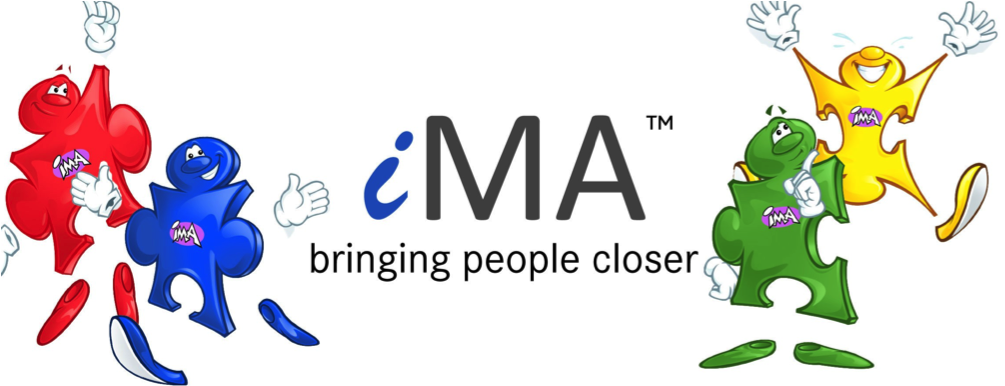In a world where PowerPoint has become the default for business talks, lectures, and even wedding speeches, it’s easy to forget that some of history’s most powerful moments were delivered without a single slide. The truth is, slides often don’t enhance your message—they dilute it. They distract your audience, restrict your delivery, and can even undermine your credibility. If you want your words to be remembered long after you’ve spoken, it might be time to close the laptop and connect with your audience the old-fashioned way—face to face.
Slides – What Are They Good For?
If you were to consider all the great speeches in modern history, including those of Winston Churchill, Martin Luther King Junior or Mahatma Gandhi, all from the twentieth century, none of their memorable speeches were delivered using slides. You may say that they would have used slides if they had been available to them, however it is my strongly held view that had they done so, people are far less likely to be quoting them long after the speeches were made.
Slides add nothing to your presentation; they don’t do what you may think they do…. they don’t help! They are a hindrance to you and to the venue where you are speaking and, most significantly of all, the audience you are speaking to.
You are very likely to have heard the expression “Death by PowerPoint”, for two reasons:
- When you are in the audience and certainly don’t want “Death by PowerPoint” inflicted on you.
- When you are the presenter and seem, on the surface anyway, to be happy to inflict “Death by PowerPoint” on others.
Here is a comprehensive list of 7 reasons not to use PowerPoint, Keynote, or similar slide-based presentation software:
1. Cognitive Overload and Reduced Comprehension
- Dual-Processing Interference: Audiences cannot effectively read and listen at the same time. When presenters read or paraphrase text on a slide, the audience is forced to split their attention, leading to reduced comprehension and retention of the information.
- Reading Ahead: The audience’s eyes are drawn to the text on the screen, causing them to read ahead of the speaker. This means they are no longer listening to the words being spoken, missing nuances, explanations and the presenter’s emotional connection to the material. Even if you only use pictures, something I get told is the antidote to the problem with using slides, members of your audience are often distracted by the images and their minds begin to wander. At that moment (and it’s often repeated) they are tuning out, not listening to you and missing what it is you want or need them to hear.
- Information Dump: Slides often become a dumping ground for large amounts of text, graphs, and bullet points. This “too much information” approach overwhelms the audience, making it difficult for them to discern what is truly important. The vast majority of facts presenting on a slide are very forgettable.
2. Damage to Credibility and Connection
- Loss of Authority: When a presenter relies heavily on slides, they can appear to be simply reading a script rather than being an expert who knows their material. This undermines their authority and expertise. It is also essential that you are front and centre of your own presentation. When using slides, you will need to allow a clear view for the audience to be able to view the slides, which means that you are having to stand aside.
- Reduced Eye Contact: The physical act of clicking through slides and looking at the screen or notes breaks eye contact with the audience. Eye contact is crucial for building trust, rapport, and demonstrating confidence. If you are worried about looking at the audience in the eyes you can just look at their eyebrows. That way they think that you are looking at them, which is what matters. Using presentation slides as a crutch to help overcome nerves etc., will always undermine your presentation and make it pointless.
- Impersonal and Sterile: Slides can create a physical and psychological barrier between the presenter and the audience. The focus shifts from a human-to-human interaction to a person-to-screen-to-person interaction, making the presentation feel sterile and impersonal. In almost all cases the audience needs to buy into you before they are willing to buy into your message. Your credibility, regardless of your titles and qualifications, is always on the line when you are making a presentation, of any kind. Therefore, you need to be building a rapport with the audience. The slides significantly reduce the chance of this happening successfully.
3. Hindrance to Spontaneity and Engagement
- Rigid Structure: A slide deck forces a linear and rigid structure on the presentation. This makes it difficult for the presenter to adapt to audience questions, reactions, or to go on an interesting tangent that might be more relevant to the moment.
- “Click-Next” Syndrome: The presenter can become a “slide operator” rather than a dynamic storyteller. The rhythm of the presentation is dictated by the slides, leading to a monotonous and predictable delivery. People will naturally adapt to the speed and manner of your spoken word, but not so with your slides. 50% of the world’s population are assertive and for them over the course of your presentation with slides, they will think that you are changing slides too slowly. The other 50% of people are non-assertive and they will be thinking that you are changing the slides too quickly. In effect, you are annoying everyone at the same time, but for the opposite reason. (To learn more about the four different styles of people, visit ashleyboroda.com).
- Passive Listening: Slides encourage a passive listening experience. When using slides, you are far less likely to engage directly with members of the audience and they are far more likely to disengage and allow their thoughts to move away from you and towards other issues.
4. The Illusion of an Actual Presentation
- Slides are not the Presentation: Many people mistake the slide deck for the actual presentation. They spend hours perfecting the slides but little time rehearsing their delivery, their story, or their key message. This is the wrong preparation focused on the wrong things. In the end your message will be lost and your presentation a disappointment for all concerned.
- Crutch/ Weak Content: Slides can become a crutch for presenters who haven’t adequately prepared or don’t have a compelling narrative. They fill the void of a good story with bullet points and graphics. If you are using slides as a crutch or indeed an aide memoir, then you are on a slippery slope.
- Focusing on Aesthetics over Substance: Time and energy are often wasted on slide design, animations, and transitions that have no bearing on the core message. The visual “wow” factor often distracts from the content itself. Your key message will be lost and you will have made no impact what so ever. Audiences are not impressed by clever graphics, what they want and need is first class content.
5. Practical and Logistical Problems
- Technical Glitches: The risk of technical failure is always present. A projector might not work, a file might be corrupted, or the software could crash or the venue can’t accommodate your laptop or its leads, leaving the presenter in a difficult and embarrassing position.
- State of the Room: To see slides clearly, rooms are often darkened. This makes it harder to read the audience’s non-verbal cues and can make the audience feel sleepy or disengaged. The state of the room; good lighting, chairs set out so that everyone is facing you, the presenter, and the acoustic are vital. Always ensure that the state of the room favours you, take control!
- Handouts: If the goal is for the audience to have a copy of the information, a well-designed document or handout is far superior to a printed-out slide deck. Handouts can be referred to later and contain more detail. Only provide the handouts after you have finished speaking, as a takeaway. I have seen lots of people hand out a printed copy of their slide deck before the live delivery. If you do that you are on an even greater hiding to nothing, as the audience will skip ahead and get frustrated with the pace of the presentation.
6. Alternative and Superior Approaches
- Storytelling: A compelling narrative is far more persuasive than a list of bullet points. A well-told story connects emotionally and makes the information memorable. A successful presentation is one that the audience can remember and quote to others. What they will retell are your stories. Two or three great stories will do the trick!
- Flipchart: Using a flip-chart encourages interaction and spontaneity. It allows the presenter to build ideas collaboratively with the audience, making them feel like active participants. Seeing you write on the flip-chart helps the audience to remember what you are telling them. Not having to deal with electric light movement also helps them to focus.
- Props: Using a physical object to demonstrate a point is far more impactful and memorable than a picture of it on a slide.
- Rhetoric and Delivery: Focusing on powerful rhetoric, vocal variety, and confident body language is the most direct and effective way to persuade an audience. By doing this you will be able to cause a reaction, by telling them things they didn’t know previously which will compel them to tell other people.
By forgoing slides, you are not simply removing a tool; you are intentionally choosing a more direct, human, and powerful form of communication. You are forcing yourself to prepare a compelling narrative, (using stories) to engage with your audience, and rely on your own knowledge and passion to make an impact. This approach respects the audience’s intelligence and values the shared experience of a live presentation.
Ready to master the art of speaking without slides?
Transform your presentation skills and captivate any audience:
– Join our high-impact public speaking course.
– Work one-to-one with an expert speaking coach.
– Train in proven presentation techniques that inspire and persuade.
Take the first step today—your most memorable speech starts now.




